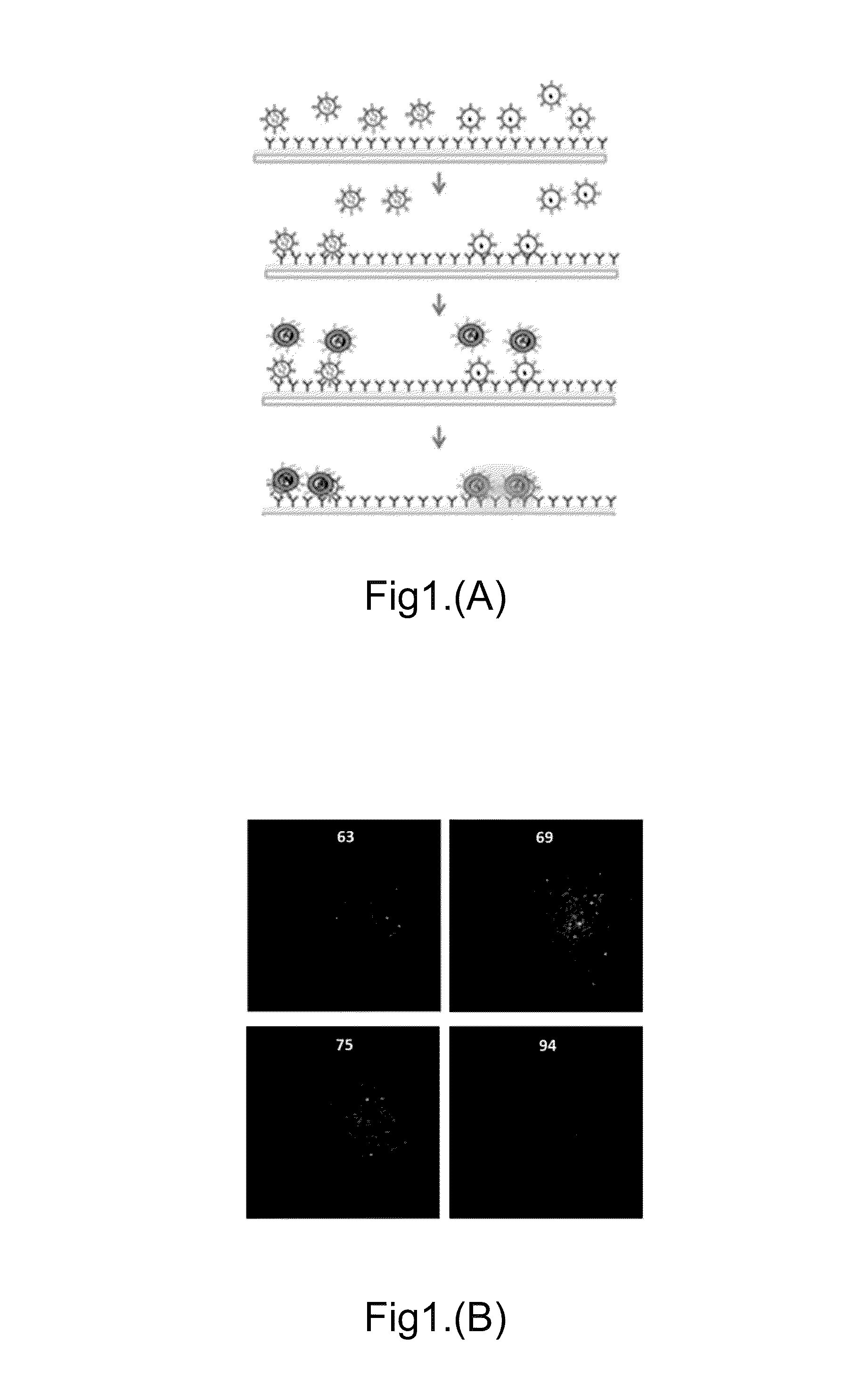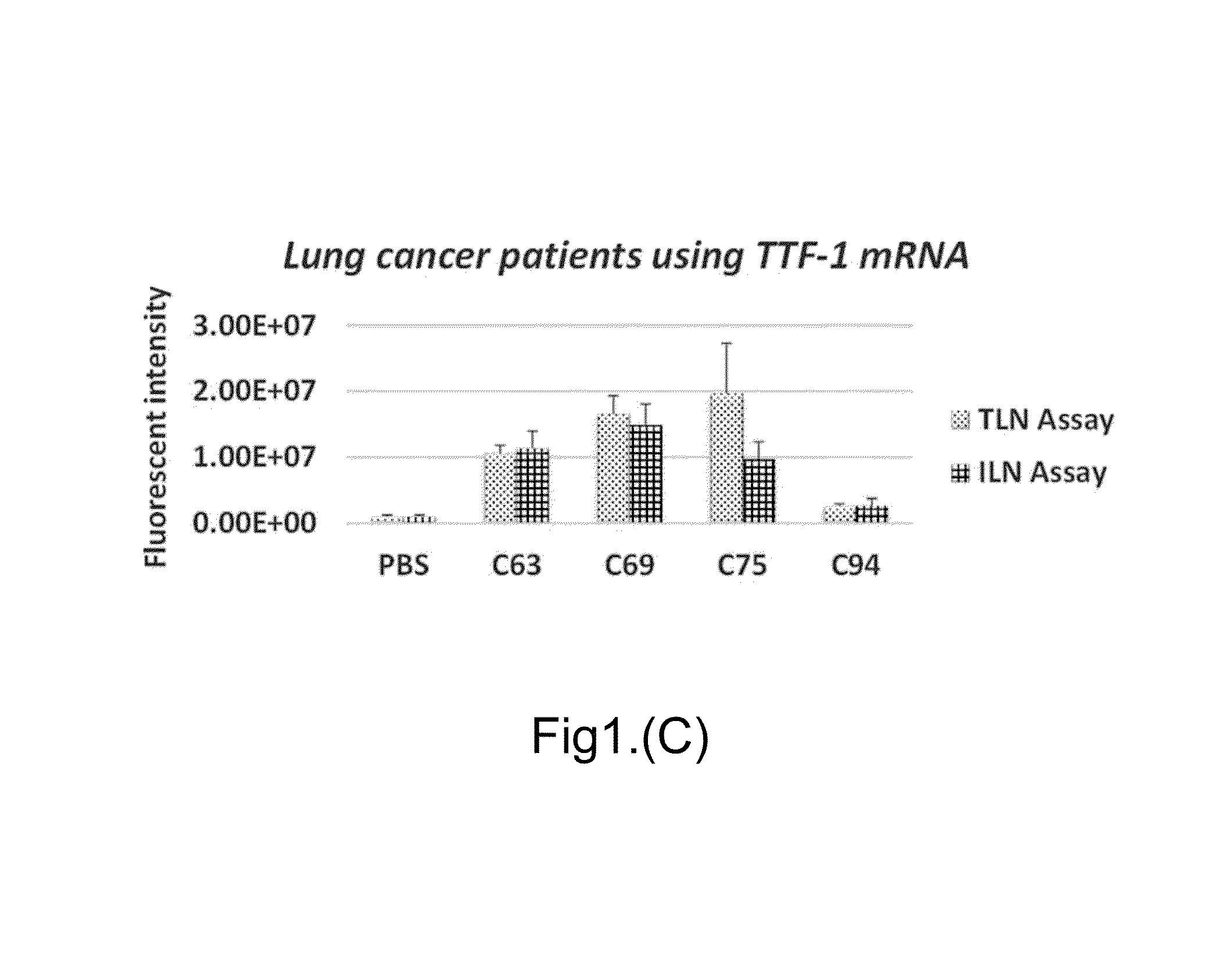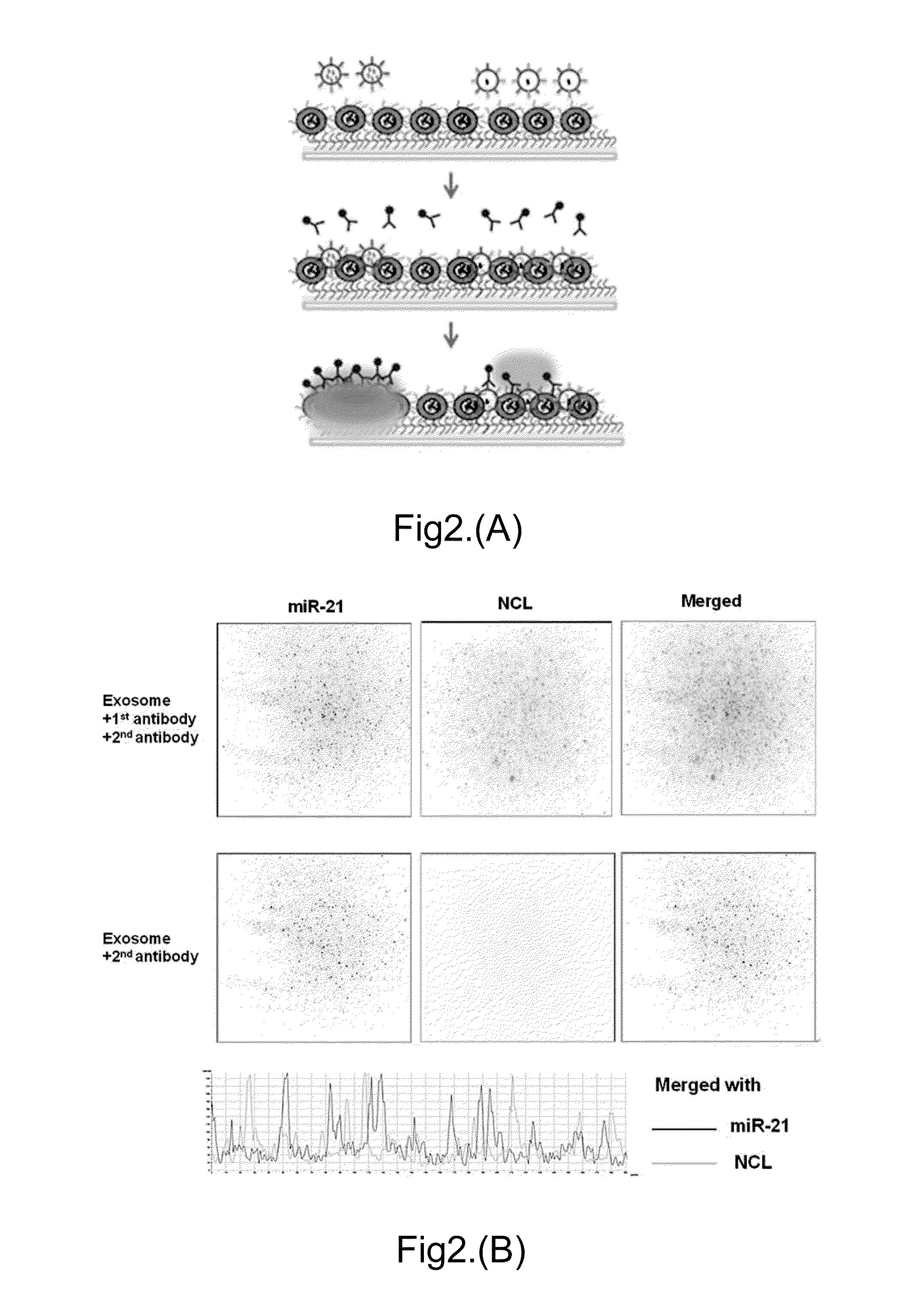ImmunoLipoplex Nanoparticle Biochip Containing Molecular Probes for Capture and Characterization of Extracellular Vesicles
a technology of micro-particles and probes, applied in the field of array biochips, can solve the problems of lack of sensitive, easy, fast, non-invasive and affordable screening tests for early disease detection, and inability to detect intra-ev contents, etc., and achieve the effect of eliminating most sample preparation steps
- Summary
- Abstract
- Description
- Claims
- Application Information
AI Technical Summary
Benefits of technology
Problems solved by technology
Method used
Image
Examples
example 1
Fabricate and Test Ab-ILN Biochip
[0096]We show a new biochip design which could simultaneously detect membrane protein targets and intra-vesicular RNA targets of individual EVs.
[0097]In one method, a mixture of 1-thiahexa(ethyleneoxide) lipidic anchor molecule WC14 [20-tetradecyloxy-3,6,9,12,15,18,22-heptaoxahexatricontane-1-thiol], biotin-PEG-SH and a lateral spacer β-mercaptoethanol (βME) in ethanol was added onto a gold coated glass substrate to form self-assembly monolayers (SAMs). Avidin was then added and un-reacted avidin was washed away using PBS. The biotin-conjugated Protein A was bound on the avidin-modified substrate surface through biotin-avidin interactions and the unbound Protein A was washed away with PBS. A target-specific antibody was then added and un-reacted antibody was washed away using PBS. The antibody-modified biochip can be used as an Ab-ILN biochip as shown in the first step of FIG. 1A.
[0098]We can tether antibodies on the chip surface to capture the EVs p...
example 2
Fabricate and Test Ab-TLN Biochip
[0103]FIG. 2A shows the schematic of an Ab-TLN biochip design for EV capturing by tethered cationic lipoplex nanoparticles and detection of intra-vesicular RNAs by MPs in the lipoplex nanoparticles, followed with the detection of surface membrane proteins using first antibody and then fluorescence labeled second antibody.
[0104]EVs from culture supernatants of 2×107 cells or 20 μL plasma samples were captured by an Ab-TLN biochip which consists of either empty liposomes or liposomes containing RNA-specific MBs (e.g. miR-21). After the fusion of negatively charged EVs with positively charged cationic LNs, a TIRF microscope was used to measure the surface receptors of captured EVs by fluorescence labelled antibody and RNA targets inside the captured EVs by the RNA-specific MBs. Using two different fluorescent molecules as shown in FIG. 2B, e.g. FAM (green) and Cy5 (red), the co-localization of both the RNA target and the surface receptor for individual ...
example 3
Ab-ILN Biochip Showing Single-EV Analysis of Co-localization of RNA and Membrane Protein Targets
[0106]We demonstrate single-EV analysis of co-localization of multiple RNA and membrane protein targets.
[0107]Our ILN biochip can be used to identify a membrane protein target and 1-2 RNA targets in a single EV.
[0108]FIG. 3A shows a biological atomic force microscopy (Bio-AFM) image of single EV secreted by A549 lung cancer cells captured by anti-CD63 antibody in aqueous solution. The diameter of this CD63-rich EV is ˜100 nm.
[0109]FIG. 3B shows a TIRF microscopy image of two miR-21-rich EVs with CD63 membrane proteins. The green fluorescent signal reports the fusion of LNs containing miR-21-specific MBs with the captured EVs.
[0110]We compare CD63-rich and NCL-rich EVs with miR-21 and TTF-1 content from A549 cell secreted EVs as shown in FIG. 3C. There are more EVs containing CD63 than NCL surface receptor, and a small fraction (12.2 and 10.9% for CD63 and NCL EVs, respectively) of those E...
PUM
 Login to View More
Login to View More Abstract
Description
Claims
Application Information
 Login to View More
Login to View More - R&D
- Intellectual Property
- Life Sciences
- Materials
- Tech Scout
- Unparalleled Data Quality
- Higher Quality Content
- 60% Fewer Hallucinations
Browse by: Latest US Patents, China's latest patents, Technical Efficacy Thesaurus, Application Domain, Technology Topic, Popular Technical Reports.
© 2025 PatSnap. All rights reserved.Legal|Privacy policy|Modern Slavery Act Transparency Statement|Sitemap|About US| Contact US: help@patsnap.com



